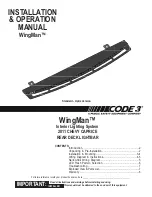
62
DRIVING CONTROLS
WARNING
The control unit of the ABS is set for
standard wheel and tire sizes. If non-
standard wheels or tires are fitted, the
control unit may misinterpret the speed
of the car, because of the variant data it
receives from the wheel speed sensors.
Fitting non-approved wheels or tires
could seriously affect the performance
of the ABS.
Activation of the ABS will vary according
to the level of grip available at the tires.
On dry surfaces, activation will occur only
with a high pedal pressure. On slippery
surfaces, only a low pedal pressure will
be needed.
On loose or uneven surfaces, such as
gravel or snow, a car with ABS may
need a longer stopping distance. Allow
a greater following distance in these
conditions.
Hydraulic Brake Assist (HBA)
Hydraulic Brake Assist (HBA) detects an
emergency situation by measuring the
gradient of brake pressure build-up. In
case of insufficient brake pressure the
HBA system increases braking force to
ensure the shortest stopping distance
possible.
Traction Control (TC)
Traction Control (TC) is integral to the
Electronic Stability Program (ESP
®
) and
detects if an excessive degree of wheelspin
from the rear wheels is occurring. TC will
reduce engine power output and apply
braking to the spinning wheel until grip
is restored. If the in the instrument
panel flashes it is an indication that TC
intervention is taking place and driving
style should be modified accordingly.
Electronic Stability Program (ESP
®
)
ESP
®
is incorporated into the software
programs of both the engine management
ECU (Engine Control Unit) and ABS ECU.
ESP
®
increases vehicle stability in extreme
manoeuvres typified by accident avoidance
attempts or misjudged cornering demands
(e.g. vehicle oversteer or understeer).
Except for initial system initialization, or
when the vehicle is being driven in reverse
(at any speed) or forwards at road speeds
of less than 2 mph, or is deselected by the
driver (see page 64), ESP is active over the
full speed range of the vehicle.
Current vehicle behaviour is constantly
monitored and compared with the deter-
mination of the driver intent as indicated
by data gathered from the driving controls.
When vehicle stability is at risk, ESP is uti-
lised to apply a measured braking force to
the individual road wheels, control the fuel
injector delivery and throttle openings as
necessary in order to help the driver main-
tain control by correcting the vehicles ‘Yaw’
rate. ESP
®
can improve vehicle stability in
some extreme conditions of use, especially
where variable or differential side/side
surface grip prevails, or when maximum
vehicle performance is being exploited.
ESP
®
is operating if the in the instru-
ment panel flashes, indicating that the
vehicles tractive limit has been reached
and that driving style should be modified
accordingly.
WARNING
The enhanced vehicle control that these
features provide should not induce any
relaxation of caution or vigilance by the
driver. Physical limits of cornering and
braking still apply and excessive speed
may result in loss of control and an ac-
cident. The driver is at all times respon-
sible for the judgement of appropriate
speed.
When driving in adverse weather, or
on poor road surfaces, always be alert
to the possibility of slippery conditions
and make the necessary allowance for
increased stopping distances.
E132T0324JA Federal Evora 400 From SOP OHB English Language.indd 62
15/08/2018 14:47:12
















































